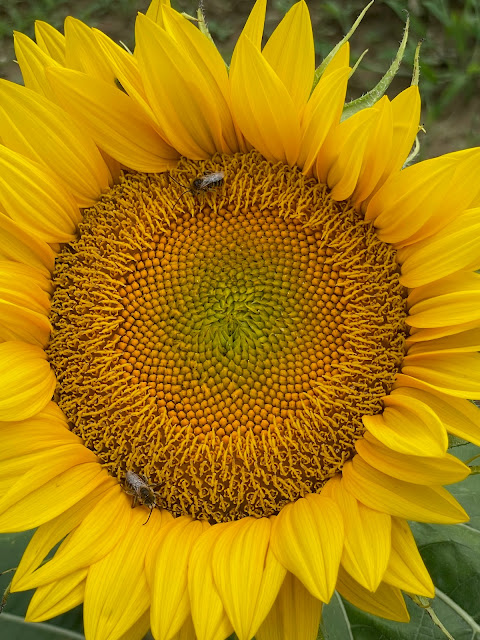Many years ago, in a high school math class in a midwestern town, Dr. Neff taught a group of students about the Fibonacci sequence. Some got it, some didn't.
I didn't. I knew what it was when he showed examples but to calculate the formula went a little bit beyond my non-mathematical mind.
The center of a sunflower shows the Fibonacci sequence. Flowers, pinecones, shells, fruits, hurricanes and even spiral galaxies, all exhibit the Fibonacci sequence.
1, 1, 2, 3, 5, 8, 13, 21… The Fibonacci sequence. Every number in the sequence is generated by adding together the two previous numbers.
They are nature’s favorite numbers. You find them all over the natural world. Count the number of petals on a flower and often it’s a Fibonacci number. (If it isn’t, that means a petal has fallen off your flower, which is how mathematicians get around exceptions).
Cut open a fruit, and often you’ll find a star shape with a Fibonacci number of arms. A banana has a three-pointed star, an apple a five-pointed star, a persimmon an eight-pointed star. Count the cells on a pineapple, and you’ll find several Fibonacci numbers. The seeds in a sunflower also exploit Fibonacci numbers to pack efficiently.
Twelfth-century monk and mathematician Leonardo de Pisa (later branded as Fibonacci) uncovered a logical sequence of numbers that appears throughout nature and in great works of art.
Last night at the dinner table, a conversation was going the wrong way and it was time to change the subject. Let's talk about Fibonacci! I was ready to talk about sunflowers. T looked at me like how do you know about Fibonacci? He's used the sequence calculating market trends. Come to find out these Fibonacci numbers fit perfectly into our modern financial markets because they describe—with great accuracy—complex relationships between individual waves within trends, as well as how far markets will pull back when they return to levels previously traded.
Oy.
I'll stick to sunflowers.


Mathematical brains see the world through a singular lens.
ReplyDelete